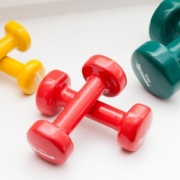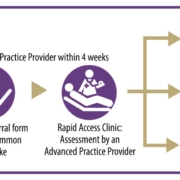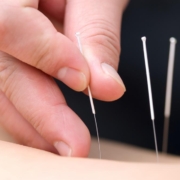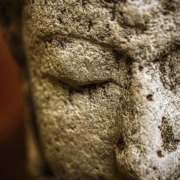5 Simple Strategies to Alleviate Stress and Back Pain
In today’s fast-paced world, stress and back pain have become unwelcome companions for many of us. Whether it’s the relentless demands of work, the pressures of daily life, or simply poor posture from hours spent hunched over screens, these issues can leave us feeling drained and uncomfortable. But fear not—relief is within reach! In this listicle, we’ll explore 5 simple strategies that can help you alleviate both stress and back pain. From mindful practices to ergonomic adjustments, each tip is designed to empower you with practical tools to reclaim your well-being. So, if you’re ready to take a step towards a more relaxed and pain-free life, read on to discover how these easy-to-implement techniques can make a significant difference in your day-to-day experience.
1) Embrace Mindful Movement: Incorporate gentle exercises like yoga or tai chi into your daily routine. These practices promote flexibility, strengthen your core, and help you connect with your body, reducing both stress and back pain
Incorporating gentle exercises such as yoga or tai chi into your daily routine can transform your relationship with your body and mind. These practices emphasize mindful movement, allowing you to cultivate awareness of your physical sensations and emotional state. As you flow through each pose or movement, you’ll enhance your flexibility and strengthen your core, which are essential for maintaining a healthy spine. The rhythmic nature of these exercises helps to release tension stored in your muscles, ultimately reducing stress levels and alleviating back pain.
To get started, consider dedicating just 20-30 minutes each day to these mindful practices. You can explore various styles and techniques to find what resonates with you. Here are some simple ideas to integrate into your routine:
- Morning Stretch: Begin your day with a few gentle stretches to awaken your body.
- Midday Break: Take a short break at work to practice deep breathing or a few tai chi movements.
- Evening Wind Down: Incorporate restorative yoga poses before bed to relax your mind and body.
By embracing these mindful practices, you’ll not only enhance your physical well-being but also cultivate a deeper connection with yourself. Here’s a quick comparison of the benefits of yoga and tai chi:
| Practice | Benefits |
|---|---|
| Yoga | Improves flexibility, strengthens muscles, promotes relaxation. |
| Tai Chi | Enhances balance, reduces stress, improves mental clarity. |
2) Create a Comfort Zone: Designate a cozy space in your home where you can unwind. Fill it with soft cushions, calming colors, and soothing scents. This sanctuary can serve as your go-to spot for relaxation and stress relief, allowing your back to decompress
Transforming a corner of your home into a cozy retreat can work wonders for your mental and physical well-being. Start by selecting a quiet area, perhaps near a window where natural light can filter through. Fill this space with soft cushions and plush blankets that invite you to sink in and relax. Choose calming colors like soft blues, gentle greens, or warm neutrals to create a serene atmosphere. Incorporate soothing scents using essential oils or scented candles—lavender, chamomile, and eucalyptus are excellent choices known for their relaxing properties.
To further enhance your comfort zone, consider adding a few personal touches that bring you joy. This could be a small bookshelf filled with your favorite reads, a calming piece of art, or even a plant that thrives indoors. Here’s a quick checklist of items to include in your sanctuary:
- Comfortable seating: A plush chair or a bean bag.
- Lighting: Soft, adjustable lighting such as fairy lights or a dimmable lamp.
- Sound: A small speaker for calming music or nature sounds.
- Personal items: Photos or mementos that evoke positive memories.
3) Prioritize Posture: Pay attention to your posture throughout the day, especially if you sit for long periods. Use ergonomic chairs, take regular breaks to stretch, and practice sitting up straight to alleviate pressure on your spine and reduce tension
Maintaining good posture is essential for anyone who spends long hours sitting, whether at a desk, in front of a computer, or during meetings. Poor posture can lead to unnecessary strain on your spine, resulting in discomfort and increased stress levels. To combat this, consider investing in ergonomic chairs that support your natural spine curvature. These chairs are designed to promote better posture, reducing the risk of back pain. Additionally, make it a habit to check in with your body throughout the day; are your shoulders slumped? Is your back rounded? Adjusting your position can make a significant difference.
Incorporating regular breaks into your routine is equally important for spinal health. Set a timer to remind yourself to stand up, stretch, and move around every hour. Simple stretching exercises can enhance circulation and relieve tension. Here are some quick stretches to consider:
- Neck Rolls: Gently roll your head to release neck tension.
- Shoulder Shrugs: Lift your shoulders towards your ears and release them.
- Seated Torso Twist: While sitting, twist your torso gently to each side to stretch your back.
By consciously practicing good posture and integrating these stretches into your day, you can alleviate pressure on your spine and significantly reduce stress. Your body will thank you for it!
4) Explore Breathing Techniques: Simple breathing exercises can work wonders for stress relief. Try inhaling deeply through your nose, holding for a few seconds, and exhaling slowly through your mouth. This practice calms your mind and helps release tension in your back
Breathing techniques are a powerful yet often overlooked tool for managing stress and alleviating back pain. By focusing on your breath, you can create a state of relaxation that not only calms your mind but also helps to release the physical tension that often accumulates in your back. One effective method is to inhale deeply through your nose, allowing your abdomen to expand fully. Hold this breath for a few seconds, feeling the oxygen fill your lungs and energize your body. Then, exhale slowly through your mouth, visualizing the stress and tension leaving your body with each breath. This simple practice can be done anywhere and at any time, making it an accessible solution for those seeking relief.
To enhance your experience, consider incorporating a few additional techniques into your routine. You might find it helpful to create a calming environment by dimming the lights or playing soft music while you practice your breathing. Here are some variations to try:
- Box Breathing: Inhale for 4 counts, hold for 4 counts, exhale for 4 counts, and hold again for 4 counts.
- Diaphragmatic Breathing: Place one hand on your chest and the other on your belly, ensuring your belly rises more than your chest as you breathe.
- Progressive Muscle Relaxation: Pair your breathing with tensing and relaxing different muscle groups in your body, starting from your toes and working up to your head.
By integrating these techniques into your daily routine, you can cultivate a practice that not only calms your mind but also contributes to long-term relief from back pain. Remember, consistency is key; even a few minutes of focused breathing can make a significant difference in how you feel throughout the day.
5) Stay Hydrated and Nourished: Proper hydration and a balanced diet play a crucial role in managing stress and back pain. Drink plenty of water and incorporate anti-inflammatory foods like leafy greens, nuts, and fatty fish into your meals to support overall well-being
Staying hydrated is essential for maintaining your body’s optimal function, especially when it comes to managing stress and alleviating back pain. Water plays a vital role in keeping your muscles and joints lubricated, which can help reduce discomfort. Aim to drink at least 8-10 glasses of water daily, and consider carrying a reusable water bottle to remind yourself to sip throughout the day. Additionally, herbal teas can be a soothing alternative, providing hydration while also offering calming effects that may help lower stress levels.
Nourishing your body with a balanced diet is equally important. Incorporate a variety of anti-inflammatory foods into your meals to support overall well-being. Here’s a quick guide to some beneficial foods:
| Food Type | Benefits |
|---|---|
| Leafy Greens | Rich in antioxidants and vitamins that combat inflammation. |
| Nuts | Provide healthy fats and protein, promoting muscle recovery. |
| Fatty Fish | High in omega-3 fatty acids, known for reducing joint pain. |
By prioritizing hydration and a diet filled with these nutrient-dense foods, you can create a supportive environment for your body to heal and manage stress more effectively. Remember, small changes in your daily routine can lead to significant improvements in your overall health.
In Conclusion
As we wrap up our exploration of these five simple strategies to alleviate stress and back pain, remember that the journey to wellness is a personal one. Each approach offers a unique pathway to relief, whether it’s through mindful movement, relaxation techniques, or lifestyle adjustments. By integrating these practices into your daily routine, you can cultivate a more balanced, pain-free existence.
Take a moment to reflect on which strategies resonate with you and consider how you can weave them into your life. Small changes can lead to significant improvements, so don’t hesitate to experiment and find what works best for your body and mind.
Ultimately, prioritizing your well-being is a vital step toward a healthier, happier you. Embrace the journey, listen to your body, and let these strategies guide you toward a life with less stress and discomfort. Here’s to finding your own path to relief and renewal!










Leave a Reply
Want to join the discussion?Feel free to contribute!